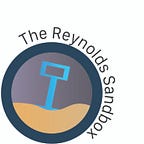Why Were The Polls So Off, Again?
Austin Daly and Henry Stone report on how for the second presidential election in a row, state polling in critical swing states was way off of the final results and way beyond the margin of error.
Why Did Democrats Underperform?
The biggest polling discrepancy occurred in Wisconsin where President-Elect Joe Biden had an average lead of eight percentage points in Wisconsin heading into election day per FiveThirtyEight’s polling aggregate, with the final result being a less than one percentage point victory for Biden.
Other states, such as Iowa, Florida, and Michigan also experienced polling errors of around ~6 points. In Nevada, Joe Biden was averaging a polling lead of ~5.3 points on FiveThirtyEight, with the final result only being a ~2.4 point lead.
While many have jumped to theories like “shy” Donald Trump voters or people lying to pollsters to help explain the discrepancy, the answer could be more fundamental to the core of polling than we think.
Not Answering Pollsters?
According to David Shor, an independent data analyst and former DNC pollster, the types of people who answer and respond to polls in the modern era are just very different from the majority of people who actually vote in elections. In an interview with Vox Media, Shor argues that the accuracy of the polls changed after the COVID-19 pandemic began. While stuck in lockdown, Democratic voters became more willing and excited to answer phone calls by pollsters, a change that did not occur among Republican voters.
“Campaign pollsters can actually join survey takers to voter files, and starting in March, the percentage of our survey takers who were, say, ActBlue donors skyrocketed,” Shor said in the Vox interview. “The average social trust of respondents went up, core attitudes changed — basically, liberals just started taking surveys at really high rates. That’s what happened.”
At the time of the large polling lead and heading into the election, Wisconsin had the third highest COVID-19 cases per capita in the country, according to Johns Hopkins University.
Nate Cohn, who ran The New York Times polling operation in 2020, believes that President Trump’s attacks on the media and on polling has made his supporters less likely to respond to them in general.
“It’s hard not to wonder whether the president’s supporters became less likely to respond to surveys as their skepticism of institutions mounted, leaving the polls in a worse spot than they were four years ago,” Cohn wrote in a post-election article in The New York Times.
Nevada Never Easy to Predict
Nevada has historically been a tough state for pollsters to get accurate information and adequate participation from, due to the odd hours that many people work in the casino and entertainment industries. But lockdown orders and high unemployment rates may have helped contribute to the higher response rates that many pollsters have seen this election cycle.
“Being around the house all day it’s like, yeah I’m probably going to answer any phone call that I get,” said Christopher Williford, a long time Democratic party voter who was laid off due to the pandemic. “And I actually did get polled this time sometime back in September. Maybe I got called years before but I definitely didn’t have time to answer when I used to be working all the time.”
Washoe County experienced record-setting turnout in the 2020 election, with 83% of voters casting a ballot in person or by mail.
What’s Next?
Polling groups such as the Pew Research Center are already analyzing what went wrong with their methodology, writing in an article that “we’ll conduct a review of our own polling, as well as a broader analysis of the polls… We are committed to understanding the sources of the problem, fixing them and being transparent along the way.”
Pew Research is also participating in a task force, hosted by The American Association for Public Opinion Research, including other pollsters such as Ipsos, Gallup, and the AP-NORC Center in order to assess the accuracy and state of polling in the 2020 election.
